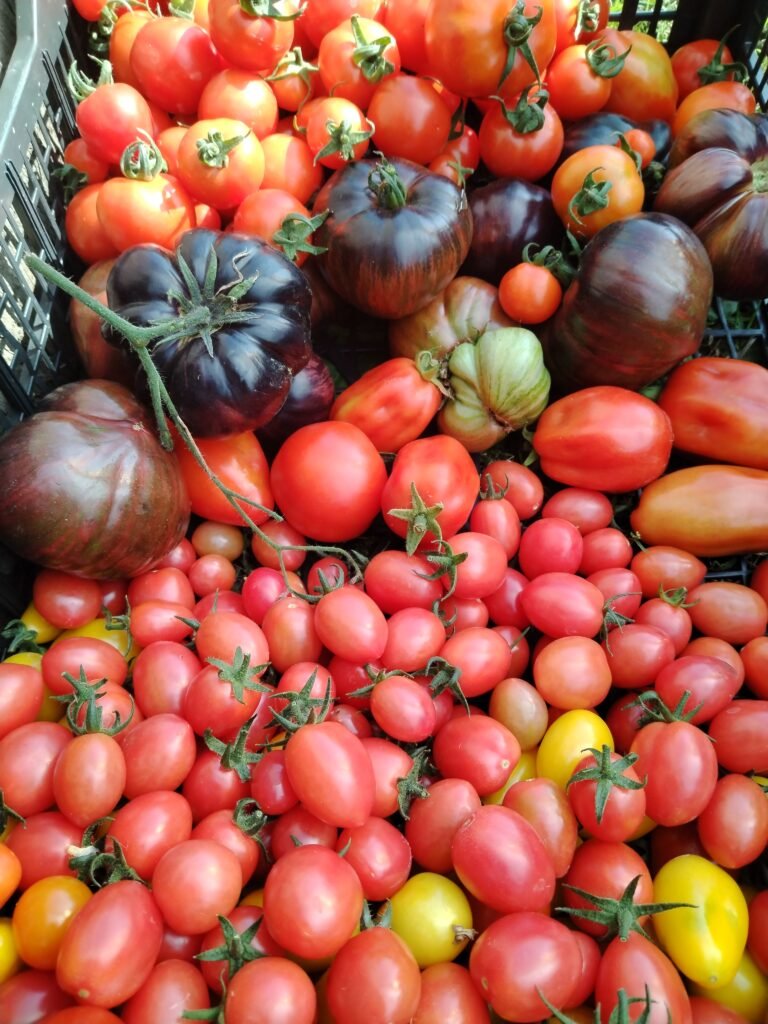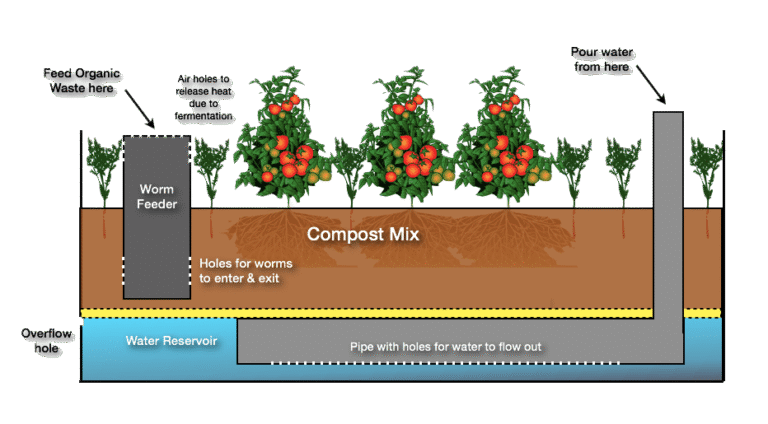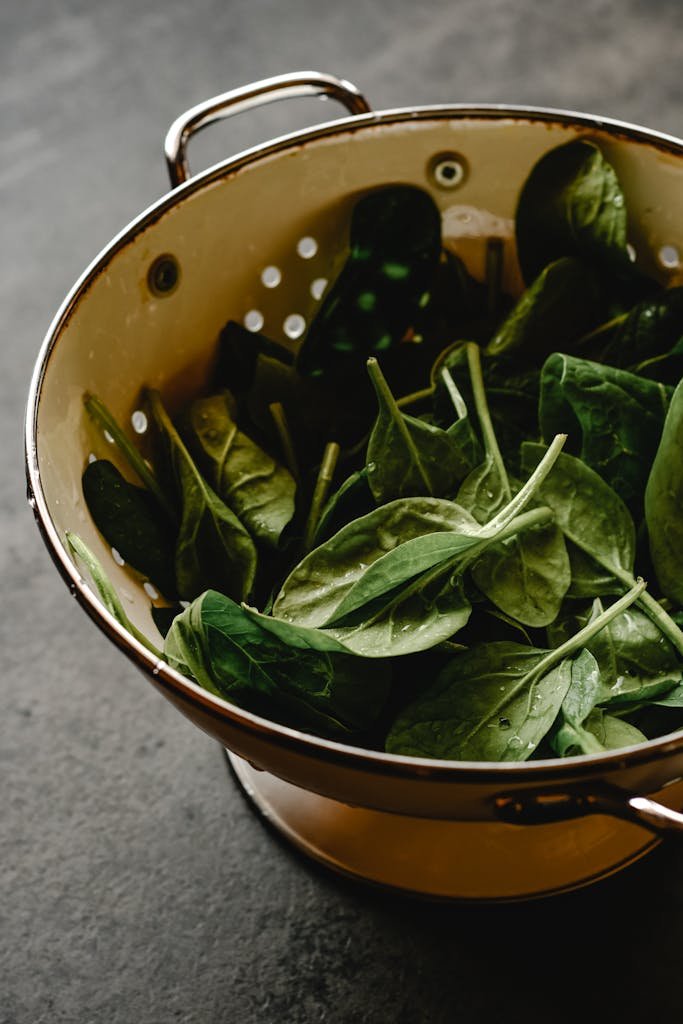
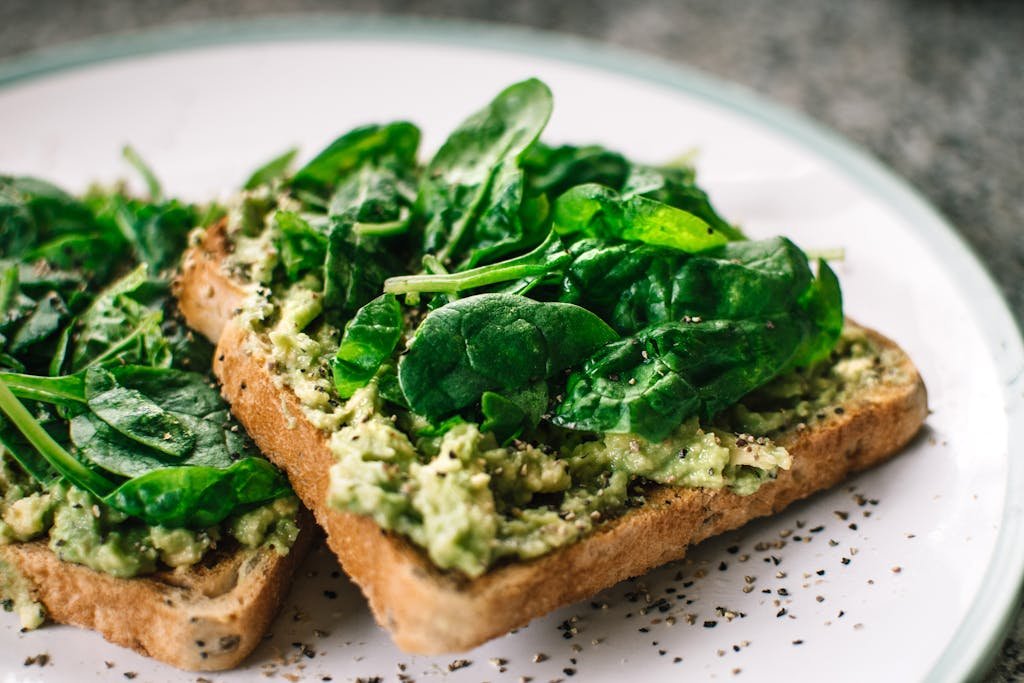
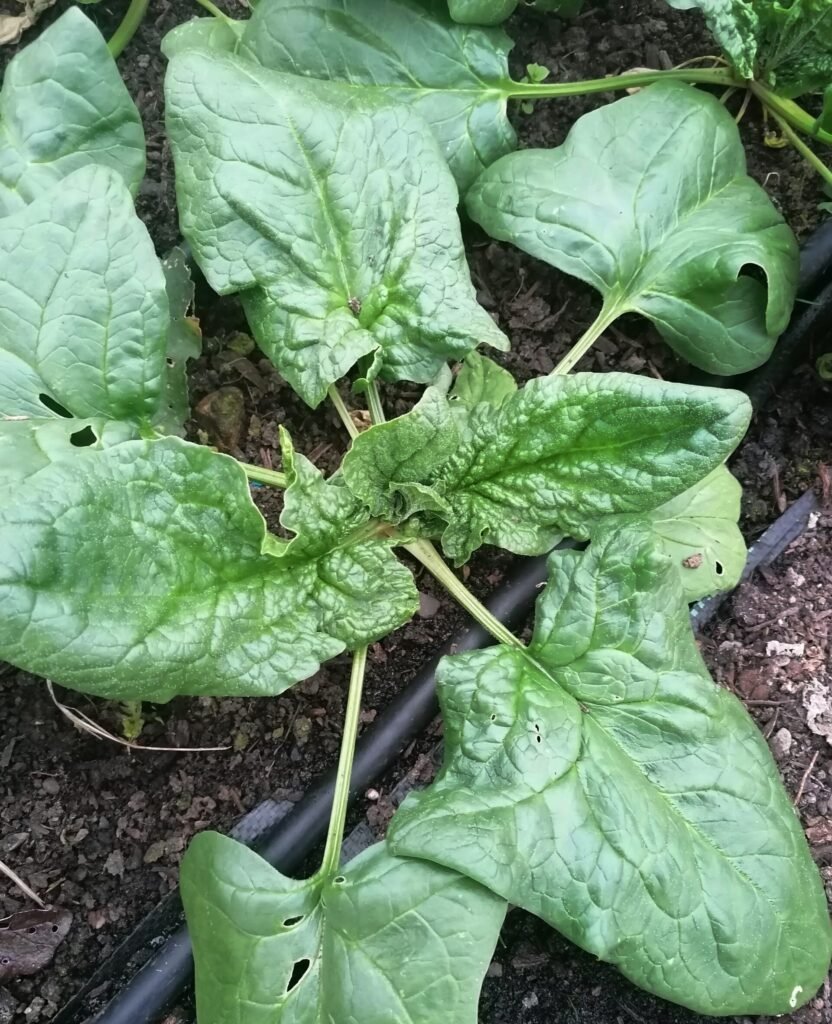
As a kid, I was convinced that Popeye and his can of spinach held the ultimate secret to strength. One gulp, and boom—those muscles popped like balloons at a birthday party! Naturally, I begged my parents for spinach at every meal, fully expecting biceps to appear overnight. While reality was a little less cartoonish, one thing was true—spinach is a powerhouse of nutrients. Packed with iron, vitamins A and C, and antioxidants, it’s one of the healthiest leafy greens you can grow and this comprehensive Spinach Growing Guide can answer all your questions on it.
But here’s the catch: spinach is on the Dirty Dozen list—a ranking of fruits and veggies with the highest pesticide residues. And that’s a big deal. Because spinach’s delicate leaves absorb chemicals like a sponge, store-bought spinach can often be laden with synthetic pesticides, even after washing. That means every bite could come with a side of unwanted toxins. Not exactly the superfood boost Popeye had in mind!
The best way to avoid that? Grow your own spinach! When you plant it yourself, you control everything—from soil to fertilizer to whether a single chemical ever touches your greens. And the best part? Spinach is surprisingly easy to grow, whether you have a sprawling garden, a tiny patio, or even just a sunny windowsill. Ready to grow fresh, chemical-free spinach with ease? Let’s dive in!
Understanding Spinach Varieties
Not all spinach is created equal, and if you’ve ever wondered why some leaves are crinkly while others are smooth as a summer breeze, you’re in the right place. Choosing the right type of spinach isn’t just about looks—it can affect everything from how easy it is to clean to how it holds up in your favorite recipes. Let’s dig into the three main types so you can find the perfect fit for your garden and kitchen.
Savoy Spinach – The Rugged Classic
Savoy spinach is the rough and tumble variety of the bunch. Its deep green, heavily crinkled leaves give it a hearty texture and a rich, slightly earthy flavor. It’s packed with nutrients, making it a fantastic choice for fresh salads or wilting into soups and stews. The downside? Those beautifully crinkled leaves love to hold onto soil and grit, so you’ll need to give them a good rinse before eating. If you don’t mind a little extra scrubbing, Savoy is a winner in both taste and toughness.
Flat or Smooth-Leaf Spinach – The Easygoing Favorite
If Savoy is the rugged outdoorsman, smooth-leaf spinach is the easygoing city dweller. Its broad, flat leaves make it the easiest to clean—no dirt hiding in deep wrinkles! This variety is a favorite for processing, freezing, or tossing into a quick salad. It grows quickly and is often found in baby spinach mixes. If you love convenience, smooth-leaf spinach is the way to go.
Semi-Savoy Spinach – The Best of Both Worlds
Can’t decide between Savoy and smooth-leaf? Semi-Savoy gives you a little of both. It has some crinkling, but not as much as Savoy, meaning it still offers a bit of texture without the hassle of intense washing. It’s great for both fresh eating and cooking, making it a versatile choice for home gardeners.
Whatever variety you choose, there’s a spinach out there for every garden and every plate!
Optimal Growing Conditions
Spinach may be a hardy green, but give it the right conditions, and it will reward you with lush, tender leaves bursting with nutrients. Whether you’re growing it in a garden bed, a container, or even sneaking it into a cold frame for year-round harvests, understanding what this leafy powerhouse craves is key to success.
Climate Requirements – Cool and Content
Spinach is a cool-weather crop through and through. It thrives when temperatures hover between 50°F and 60°F (10°C to 15°C), making it a perfect candidate for spring and fall planting. Once the heat of summer kicks in, spinach tends to bolt—sending up a flower stalk instead of growing those tasty leaves. If you’re dealing with warmer weather, consider shade cloth or a later fall planting to extend your harvest.
Sunlight Needs – A Balance of Light and Shade
While spinach loves a good dose of full sun, it’s not one to complain about a little shade, especially in hotter climates. If you live in a region where spring turns into summer overnight, giving your spinach a bit of afternoon shade can help prevent it from bolting too soon. If you’re growing in containers, simply moving your pots around can help you strike the perfect sun-to-shade balance.
Soil Preparation – A Nutrient-Rich Foundation
Great spinach starts with great soil. This leafy green loves well-draining, fertile soil packed with organic matter. Aim for a pH between 6.0 and 7.0—slightly acidic to neutral—to keep your plants happy. Adding compost or well-rotted manure before planting will give your spinach the rich nutrients it needs to grow strong, flavorful leaves. Loose, crumbly soil is best, as compacted soil can stunt growth and lead to lackluster harvests.
Give spinach what it wants, and it will return the favor with lush, delicious leaves ready for your next salad or stir-fry!
Planting Spinach Seeds
Spinach is a forgiving crop, but a little planning goes a long way in ensuring a bountiful harvest. Whether you’re tucking seeds into garden beds, raised beds, or containers, timing and spacing can make all the difference.
When to Plant – Timing is Everything
Spinach thrives in cool weather, so the best planting windows are early spring and fall. As soon as the soil is workable in spring—meaning it’s no longer frozen and can be turned easily—you can direct sow your spinach seeds. In fall, plant about 6-8 weeks before the first expected frost to enjoy fresh greens before winter sets in. If you’re in a mild climate, you might even get away with growing it year-round using cold frames or row covers!
Seed Spacing and Depth – Room to Grow
Spinach seeds are tiny but mighty. Plant them about ½ inch deep and space them 2 inches apart in rows that are 12 inches apart. Once the seedlings sprout and develop their first true leaves, thin them to 4-6 inches apart for stronger, healthier plants. If you’re growing in containers, aim for 6-inch spacing to allow enough room for lush leaf development.
Succession Planting – Keep the Greens Coming
One of the best tricks to never running out of spinach is succession planting. Instead of sowing all your seeds at once, plant a new batch every 2-3 weeks. This staggered approach ensures a steady supply of fresh leaves rather than a single overwhelming harvest. By the time one batch starts to slow down, the next one is ready to take over!
With the right timing, spacing, and a little planning, you’ll have a continuous supply of fresh, homegrown spinach—ready to pick whenever your next meal calls for it!
Watering and Fertilization
Like any leafy green, spinach thrives when given the right balance of moisture and nutrients. Too little water, and the leaves turn bitter; too much, and you risk rot. A little attention to watering and feeding will keep your spinach growing lush and vibrant.
Watering Practices – Keeping It Just Right
Spinach prefers consistent moisture, so the goal is to keep the soil evenly damp but not soggy. Aim for about 1 inch of water per week, whether from rainfall or manual watering. In drier spells, a deep watering once or twice a week is better than frequent, shallow watering—this encourages deeper root growth.
A layer of organic mulch (like straw or shredded leaves) can help retain moisture, prevent soil from drying out too quickly, and even keep weeds at bay. If you’re growing in containers, keep an extra eye on moisture levels, as pots dry out much faster than garden beds.
Fertilization – Feed Those Leaves
Spinach is a heavy feeder, especially when it comes to nitrogen, the key nutrient for lush, leafy growth. Before planting, work some well-rotted compost or a balanced fertilizer (like 10-10-10) into the soil. If your plants look a bit pale or sluggish, side-dress with a nitrogen-rich fertilizer like blood meal, fish emulsion, or an organic vegetable fertilizer about 3-4 weeks after planting.
Avoid overfeeding with high-phosphorus fertilizers meant for fruiting plants—spinach doesn’t need extra flowers or roots, just big, beautiful leaves! With the right watering and feeding routine, you’ll be harvesting vibrant, nutrient-packed spinach in no time.
Pest and Disease Management
Even the hardiest spinach patch isn’t immune to pesky invaders and stubborn diseases. But with a little know-how, you can keep your crop healthy, thriving, and chemical-free.
Common Pests – The Unwanted Guests
Aphids, leaf miners, and slugs are the usual suspects when it comes to spinach pests.
- Aphids – These tiny sap-suckers love clustering under leaves, leaving behind a sticky mess. A strong blast of water or a neem oil spray usually sends them packing.
- Leaf Miners – If you spot squiggly trails running through your spinach leaves, these burrowing larvae are the culprits. Pick off affected leaves and encourage predators like parasitic wasps to keep them in check.
- Slugs – These nighttime nibblers leave ragged holes in your spinach. Hand-picking at dusk, beer traps, or scattering crushed eggshells around your plants can deter them.
Disease Prevention – The Power of Airflow
Spinach is prone to fungal diseases like downy mildew, especially in damp conditions. To prevent problems:
- Space plants properly to allow for good airflow.
- Water at the base, not overhead, to keep leaves dry.
- Rotate crops each season to prevent disease buildup in the soil.
Organic Control Methods – Nature’s Helping Hand
For a natural approach to pest control, neem oil works wonders against aphids and leaf miners. Introducing beneficial insects like ladybugs and lacewings can also help keep populations down.
By keeping an eye on your spinach patch and using these organic strategies, you can outsmart pests and diseases without resorting to harsh chemicals!
Harvesting and Storage
Few things are as satisfying as harvesting fresh spinach straight from the garden. But timing and technique are everything when it comes to getting the best flavor and longest-lasting greens.
When to Harvest – The Perfect Timing
Spinach is a quick grower, and you can start picking leaves sooner than you might think.
- Baby spinach (tender and mild) is ready in about 30 days.
- Mature spinach (full-bodied flavor) takes 40-50 days.
The trick? Don’t wait too long! Once spinach starts to bolt (send up a flower stalk), the leaves turn bitter. Keep an eye on rising temperatures, as heat will speed up bolting.
Harvesting Technique – Pick and Keep It Growing
For continuous harvests, use the “cut-and-come-again” method:
- Snip outer leaves first, leaving the smaller inner ones to grow.
- Use sharp scissors or garden shears to avoid damaging the plant.
- If harvesting the whole plant, cut at the base, just above the soil.
Regular harvesting encourages more growth, so don’t be shy about plucking those leaves!
Storage Tips – Keeping Spinach Fresh
Spinach is best enjoyed fresh, but proper storage can keep it crisp for longer.
- Do not wash before storing – moisture speeds up spoilage.
- Wrap leaves in a damp paper towel and place them in a breathable plastic bag in the fridge.
- For long-term storage, blanch and freeze spinach to preserve nutrients.
With the right harvesting and storage methods, you can enjoy garden-fresh spinach for weeks—or even months if you freeze it!
Conclusion – Grow Your Own, Skip the Chemicals
Growing spinach at home isn’t just rewarding—it’s one of the best ways to avoid pesticide exposure. If you’ve read my guide on how to grow the Dirty Dozen, you already know that store-bought spinach tops the list for pesticide contamination. That means every crisp leaf you pick from your garden is one less worry on your plate.
And the best part? Spinach is surprisingly easy to grow. With a bit of cool weather, rich soil, and steady moisture, your garden will reward you with tender, nutritious greens in no time. Whether you’re tossing fresh baby leaves into a salad, blending them into smoothies, or wilting them into a cozy soup, homegrown spinach is fresher, tastier, and packed with all the good stuff Popeye swore by (minus the questionable canned texture).
If this guide has convinced you to start your own spinach patch, why stop there? Many of the Dirty Dozen culprits—like strawberries, kale, and peppers—are just as easy to grow. Take back control over what goes into your food, one plant at a time.
So go on—sow those seeds, nurture your garden, and enjoy the simple joy of harvesting your own food. Your taste buds (and your health) will thank you!



